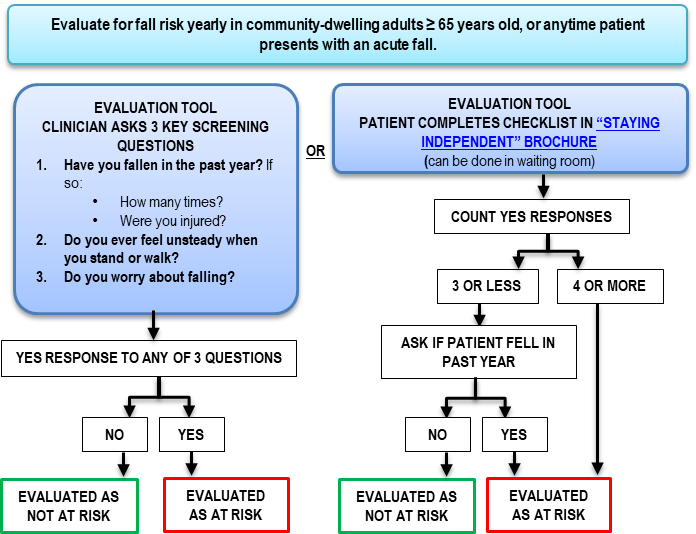What Does Dementia Fall Risk Mean?
What Does Dementia Fall Risk Mean?
Blog Article
Our Dementia Fall Risk PDFs
Table of ContentsThe smart Trick of Dementia Fall Risk That Nobody is Talking AboutThe 3-Minute Rule for Dementia Fall RiskFascination About Dementia Fall Risk5 Simple Techniques For Dementia Fall RiskNot known Details About Dementia Fall Risk
You may be anxious due to the fact that you've had a loss before or since you have actually observed you're starting to feel unstable on your feet. You might have noticed changes to your health, or just seem like you're reducing a little. Whatever the factor, it isn't uncommon to come to be mindful and shed self-confidence, and this can quit you doing the things you made use of to do and make you feel more isolated.If you've had a loss or you've started to really feel unsteady, tell your physician also if you really feel great or else. Your doctor can inspect your balance and the way you stroll to see if improvements can be made. They may be able to refer you for a drops risk analysis or to the drops prevention service.
This details can be acquired through meetings with the individual, their caretakers, and a testimonial of their medical documents. Begin by asking the private regarding their background of drops, consisting of the frequency and circumstances of any recent falls. Dementia Fall Risk. Ask about any mobility issues they may experience, such as unstable or difficulty walking
Conduct an extensive review of the person's drugs, paying specific interest to those recognized to enhance the threat of falls, such as sedatives or medications that lower high blood pressure. Establish if they are taking numerous drugs or if there have been recent modifications in their drug regimen. Evaluate the person's home setting for possible risks that can increase the threat of drops, such as inadequate illumination, loose rugs, or absence of grab bars in the restroom.
Dementia Fall Risk for Dummies
Guide the person via the autumn risk assessment type, describing each question and taping their feedbacks precisely. Compute the overall danger score based on the actions given in the assessment type.
This strategy might consist of exercise programs to improve stamina and balance, medicine adjustments, home alterations, and references to various other professionals as required. Regularly keep track of the person's progress and reassess their danger of falls as required. Modify the treatment strategy based upon adjustments in their health and wellness condition or home setting. Offer recurring education and assistance to advertise safety and security and reduce the danger of falls in their day-to-day living activities.
Several studies have revealed that physical therapy can help to decrease the risk of falling in grownups ages 65 and older. In a brand-new research study (that checked out drops risk in ladies ages 80 and older), researchers calculated the financial effect of selecting physical treatment to stop falls, and they discovered that doing so conserves $2,144, including all the surprise expenses of your time, pain, missed out on life occasions, and the dollars spent for solutions.
Our Dementia Fall Risk PDFs
Examining your heart rate and blood pressure measurements at remainder and while you alter positions (from resting or lying to standing). A basic examination of your thinking (cognitive) abilities. Assessing your balance, strength, and strolling capability. A simple vision examination. Assessing your feet and footwear. A home safety analysis. anchor Based on the examination results, your physiotherapist will certainly design a strategy that is customized to your particular needs.
Older adults that read have problem walking and speaking at the same time are at a greater threat of dropping. Dementia Fall Risk. To assist raise your safety during everyday activities, your physical specialist might develop a training program that will challenge you to maintain standing and strolling while you do one more task. Examples consist of walking or standing while counting backward, having a conversation, or lugging a bag of grocery stores
Set objectives for enhancing their physical activity. Work out much more to boost their strength and balance. These programs commonly are led by volunteer trainers.
A Biased View of Dementia Fall Risk

Measles, or rubeola, is a highly contagious, severe viral transmittable illness brought on by the measles virus. Some people consider measles as just a rash and fever that clears in a few days; nonetheless, measles can create serious health and wellness problems, particularly in kids more youthful than 5-years-old. The ideal defense versus measles is the measles, mumps, and rubella (MMR) injection.
Loss are a common root cause of injury amongst older adults. According to the CDC, in one year alone, fall-related injuries added to over $50 billion in medical expenses (Dementia Fall Risk). In health center settings, older grownups go to especially high risk of drops because their decreased mobility from being confined to a space or bed.
Unknown Facts About Dementia Fall Risk

She has no background of falls, her stride is stable, and she nullifies with no issues. The previous nurse states that she calls for help to the bathroom when she needs to go.
Examples of typical fall interventions/measures include: Making sure a client's necessary items are within reach. Beyond recognizing just how to use the Johns Hopkins Loss Threat Assessment Device, it's important that facilities incorporate its use right into an extra thorough fall avoidance strategy.
Report this page